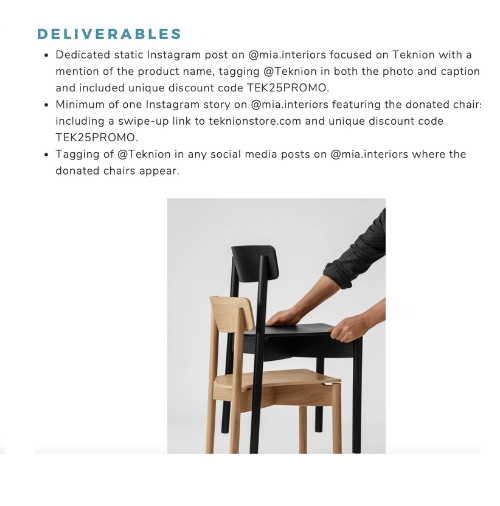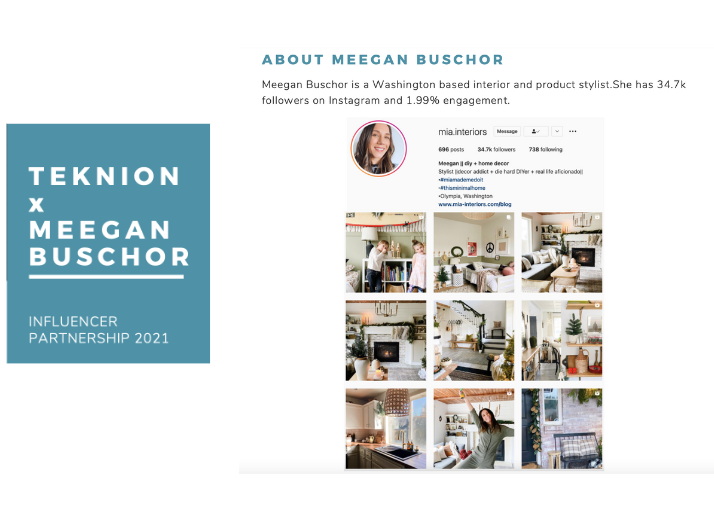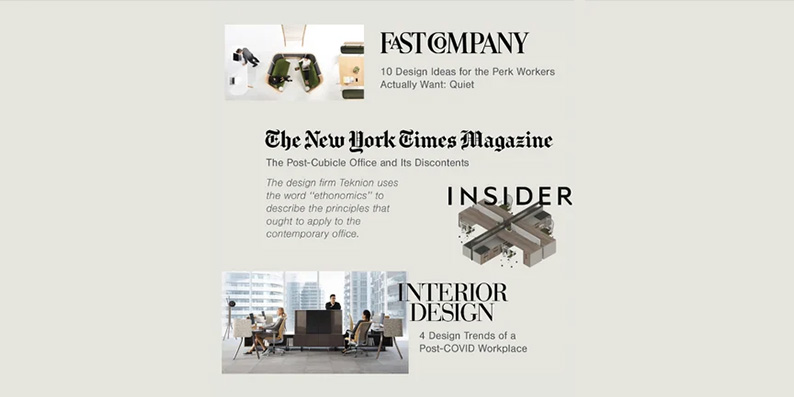Public relations is a powerful and underutilized tool in the world of marketing. We asked Susan Fernandex of Upspringer PR to share the extreme value PR can bring to fuel sales growth and provide protection from recession in the world of building materials.
If you manufacture or sell building materials, you know firsthand that the market can change on a dime due to unforeseen circumstances such as COVID-19, a labor shortage, or even just the rumblings of a recession. It’s time to add something new to your business development toolkit.
The truth is that 95% of building material companies use the same tactics to reach and engage with customers and grow sales.
Confession time: I know this first hand because for the past ten years, my branding agency has provided a mix of the following solutions to our clients:
Branding and Come-To-Market Strategies: Soup to nuts, everything from the name, logo, brand tone, and voice to full-on marketing plans.
Website with SEO: Whether it is a rebuild or a reskin, websites are both your 24-hour salesperson as well as a “gut check” for dealers, investors, and the press.
Advertising/Paid media: This can include traditional advertising, such as print and broadcast ads, and digital advertising, such as Google AdWords and social media ads/sponsored posts.
Content marketing: Creating and sharing informative and relevant content, such as blog posts, videos, and infographics, to attract, educate, convert, and retain customers.
Email marketing: Using targeted lists to send relevant and personalized emails to customers and potential customers to promote products and services.
Trade shows and events: Participating in industry trade shows and events allows building material companies to showcase their products and services to a large, targeted audience.
Sales promotions: Offering special discounts, coupons, and other promotions can help to drive sales and attract new customers.
Partnering with professionals: Building material companies can partner with contractors and other industry professionals to reach a wider audience and establish themselves as trusted suppliers.
Over the past year, I have learned the secret hack used by the top 5%; they add Public Relations (PR) to their tactical mix to accelerate growth, increase market share, and overtake the competition.
Business development isn’t what it used to be. Companies are rarely doing the projects they want to be doing or growing into the sectors they want to be in. To level up, you need to put out into the world what you want to do, not what you’ve done. So, how do you show the world what you’re capable of before you’ve done it? Use PR. It’s business development in disguise.
What is PR, and how does it stack up against traditional advertising?
In essence, PR is the practice of building relationships with the media, stakeholders, and the public in order to shape and protect a company’s reputation. PR uses earned media rather than paid advertising to achieve business goals at a lower cost.
Effective PR uses stories, not press releases, to engage the media. While this seems to fly in the face of common knowledge, it’s true. The press isn’t interested in talking about a specific product just because it’s new or they like it; rather, it must be an incidental part of a rich story that has value to the readers.
Stories are our most powerful form of communication and the very first method used by man to convey vital information. Disney has turned storytelling into a multi-billion dollar industry. PR ties products and materials to relevant news stories to give them credibility and importance to the reader. Your products have a story, and it is up to your PR team to tell it.
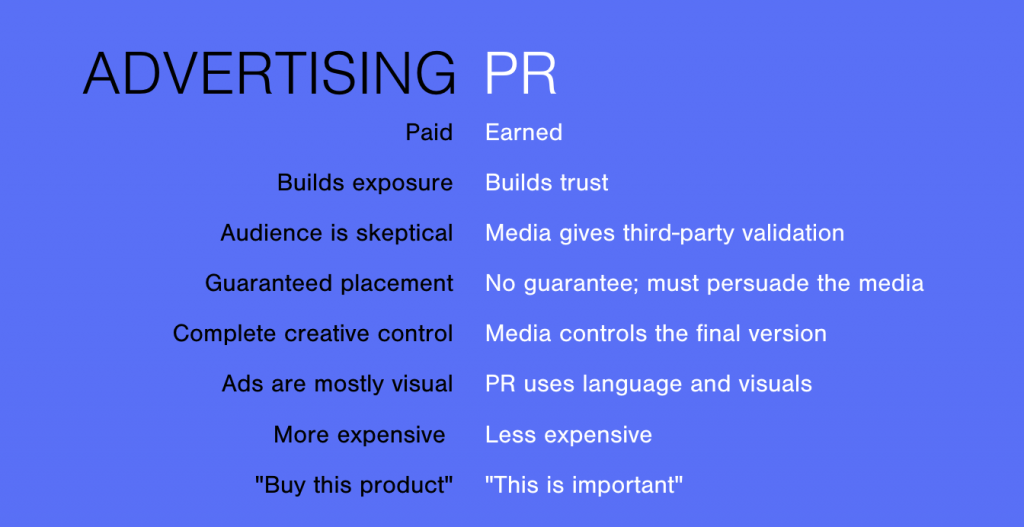
In other words, some companies spend money to be in the media, while others use PR to get placement for free.
There are several differences between PR placements and buying an ad, and the value of each will depend on the specific goals and objectives of a company. Here are a few examples of the value of PR placements versus buying an ad:
1. Credibility
PR placements, especially in reputable publications or news outlets, can add credibility to a company and its products or services. This is because the content is typically editorially independent, meaning it has not been paid for by the company. On the other hand, ads are typically viewed as less credible because they are paid for by the company and may be perceived as biased.
“Next to word-of-mouth advice from friends and family, editorial commentary (usually generated by your friendly, behind-the-scenes PR practitioner) carries far more weight than advertising.” Steve Cody – Inc. magazine.
2. Reach
Buying an ad can give a company control over where and when it appears, whereas PR placements rely more on media outlets deciding to cover a story. However, PR placements can often reach a larger and more targeted audience, as they are often shared and re-shared on social media and other platforms.
3. Cost
PR placements are a fraction of the cost of buying an ad because your expense is only for the service provided and the renderings/photography needed. One image can tell several different stories across multiple media outlets.
4. Long-term impact
PR placements can have a longer shelf life than ads, as they can continue to be shared and re-shared long after they are initially published. We don’t search for ads online. We are looking for relevant information, and PR placements live on.
PR can be used for various purposes, all with the end goal of increasing sales and specifications. Building material companies can use it to:
- Become an industry thought leader
- Gain a positive reputation around a product or program
- Grow awareness for acquisition
- Announce a new product, service, or partnership
- Respond to a challenge or opportunity
- Share corporate initiatives around community involvement and charitable giving
5. Thought Leadership
Thought leadership is being thrown around loosely these days. What does it mean to be a thought leader?
To be a thought leader, you must use your product’s differentiators to show potential clients what is possible. How can you help them stand out? How are you innovating? How are you able to help them innovate? And more than anything else, why are you relevant to today’s changing landscape?
Thought leadership is using your knowledge in a context to solve your customers’ problems.
Here is an example of product placements as thought leadership for Teknion, a workplace furniture company. In this scenario, the product was pitched to the media as a solution to help return the post-COVID workforce to the office. Teknion demonstrated that it understood and was pivotal to a smooth return to the office, workplace happiness, and employee retention. The fact that it was a chair was irrelevant; Teknion understood the challenges and was an important part of the solution. Their positioning was echoed in the publication headlines.
6. Product placement is still important.
Bringing a product to market is an expensive endeavor. Consistent product placement ensures that your R&D pays off for years. An ad in any of these publications may start at $60K, in these examples, product placement is free.
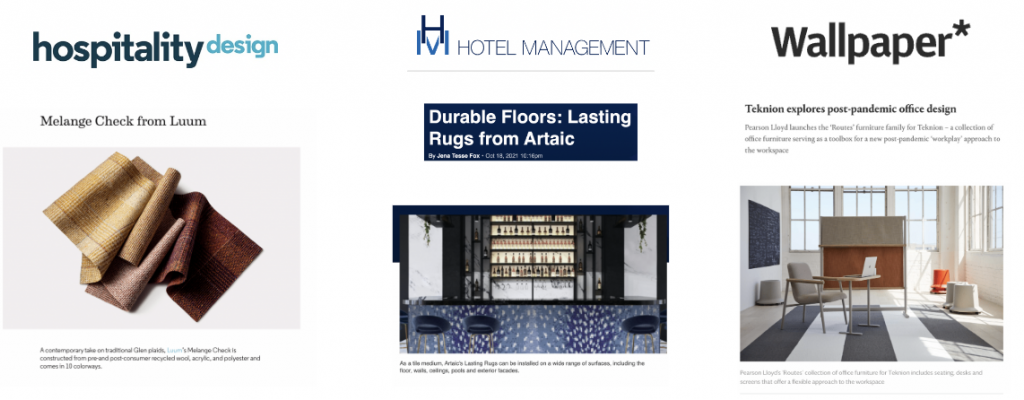
7. Influencers
Staying business development-minded, influencers can help you expand your market share. No longer only for B2C products, we are using and seeing incredible success leveraging influencers for B2B product clients. The burning question is, are all influencers paid to play? The answer is the majority of influencers want products in exchange for exposure.
You can work with influencers to create content that resonates with your brand’s target markets that can be leveraged in your marketing and sales initiatives.
In this example, Teknion partnered with influencer Meegan Buschor. Working with influencers requires a game plan and a clear agreement of deliverables. Never leave anything to chance and be sure to measure your results.
